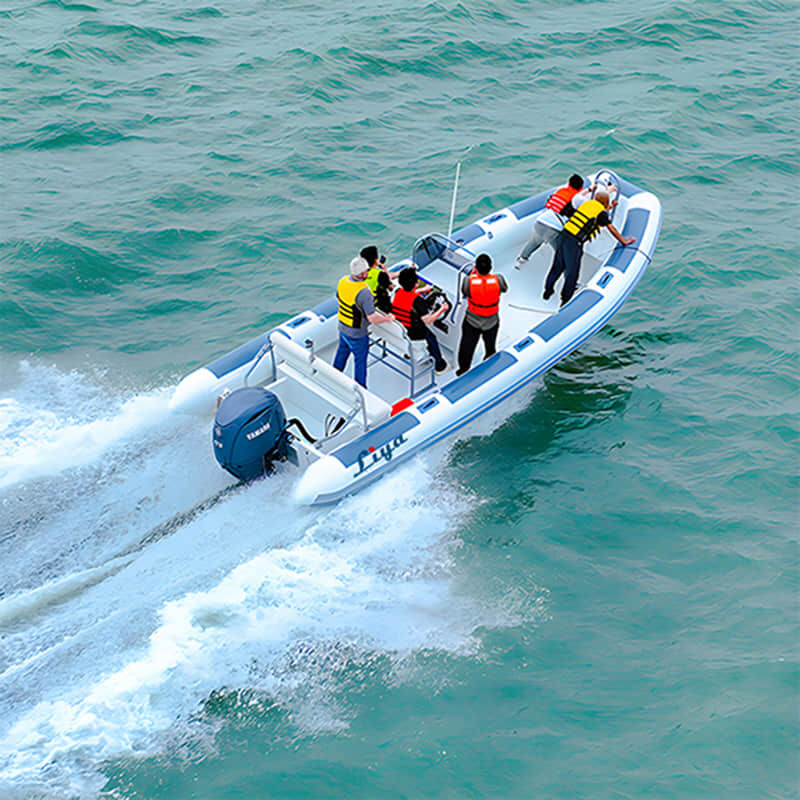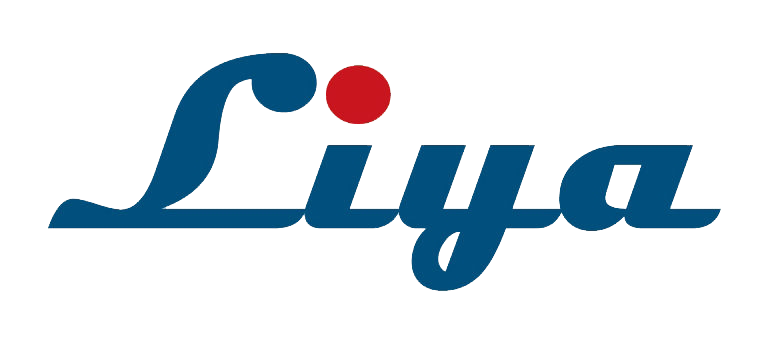Rigid Hulled Inflatable Boats have revolutionized marine transportation, combining the stability of traditional hulls with the flexibility of inflatable tubes. When searching for a RHIB for sale, understanding the fundamental characteristics and applications of these versatile vessels becomes crucial for making an informed purchasing decision. These boats serve multiple purposes, from military and commercial operations to recreational boating and emergency response services. The unique design provides exceptional buoyancy, shallow draft capabilities, and remarkable stability in various sea conditions, making them increasingly popular among professional mariners and recreational boaters alike.

Understanding RHIB Construction and Design Features
Hull Materials and Construction Methods
The rigid hull foundation represents the most critical component when evaluating any RHIB for sale. Manufacturers typically utilize fiberglass, aluminum, or composite materials for hull construction, each offering distinct advantages for specific applications. Fiberglass hulls provide excellent durability and smooth riding characteristics, while aluminum construction offers superior strength-to-weight ratios and corrosion resistance in saltwater environments. Composite materials combine multiple material properties, delivering enhanced performance characteristics but often at premium pricing levels.
Advanced construction techniques include vacuum bagging, resin transfer molding, and hand-laid fiberglass processes that significantly impact overall boat quality and longevity. Professional-grade RHIBs often feature reinforced transoms, integrated lifting points, and specialized mounting systems for equipment installation. The hull design itself varies considerably, with deep-V configurations providing superior offshore performance while modified-V designs offer improved shallow water capabilities and fuel efficiency for coastal operations.
Inflatable Tube Technology and Materials
Inflatable tube construction represents another crucial consideration when examining available options. High-quality tubes utilize either Hypalon or PVC materials, with Hypalon offering superior UV resistance and longevity in marine environments. The tube diameter directly affects stability, load capacity, and overall vessel performance characteristics. Larger diameter tubes provide increased buoyancy and stability but may compromise speed and fuel efficiency in certain applications.
Modern tube designs incorporate multiple air chambers for enhanced safety, ensuring continued buoyancy even if one chamber experiences puncture or failure. Valve systems vary between manufacturers, with some utilizing standard Boston valves while others employ proprietary high-flow valve designs for rapid inflation and deflation. Proper tube pressure maintenance becomes essential for optimal performance, requiring regular monitoring and adjustment based on temperature conditions and operational requirements.
Engine Selection and Performance Considerations
Outboard Motor Compatibility and Sizing
Engine selection significantly impacts vessel performance, operational costs, and maintenance requirements when purchasing a RHIB for sale. Outboard motors remain the preferred propulsion method for most RHIB applications due to their reliability, serviceability, and power-to-weight advantages. Proper engine sizing requires careful consideration of intended use, typical load conditions, and desired performance characteristics including top speed, cruise efficiency, and acceleration capabilities.
Four-stroke outboard engines generally provide better fuel economy and reduced emissions compared to two-stroke alternatives, though two-stroke engines often deliver superior power-to-weight ratios for high-performance applications. Engine manufacturers like Mercury, Yamaha, Honda, and Suzuki offer comprehensive model ranges suitable for various RHIB configurations, from smaller recreational units to large commercial or military specifications requiring multiple engine installations.
Fuel System Design and Capacity Planning
Fuel system design directly affects operational range, safety, and convenience during extended missions or recreational outings. Built-in fuel tanks offer advantages including lower center of gravity, protection from damage, and increased capacity compared to portable tank solutions. However, removable tanks provide flexibility for maintenance, cleaning, and multi-fuel compatibility in certain operational scenarios.
Tank capacity calculations must account for engine fuel consumption rates, typical mission profiles, and required reserve margins for safety considerations. Professional operators often specify 20-30% reserve fuel capacity beyond calculated consumption requirements. Fuel system components including filters, pumps, gauges, and fill systems require marine-grade specifications to ensure reliable operation in challenging saltwater environments and prevent costly maintenance issues or operational failures.
Operational Applications and Use Case Analysis
Commercial and Professional Applications
Commercial operators frequently utilize RHIBs for diverse applications including search and rescue operations, patrol duties, crew transfer services, and marine survey work. The shallow draft capabilities allow access to areas impossible for traditional vessels, while the stable platform provides excellent working conditions for equipment operation and personnel safety. Many commercial specifications include specialized equipment mounting systems, navigation electronics, and communication systems integrated during manufacturing.
Professional applications often require specific certification standards including CE marking, USCG approval, or military specifications depending on intended use and operational requirements. These certifications ensure compliance with safety standards, construction quality requirements, and performance specifications necessary for commercial insurance coverage and regulatory compliance in various jurisdictions worldwide.
Recreational Boating and Personal Use
Recreational RHIB applications continue expanding as boaters discover the versatility and performance advantages these vessels provide. Beach landing capabilities, shallow water access, and excellent stability make RHIBs ideal for family boating, fishing expeditions, diving operations, and water sports activities. The inflatable tubes provide natural fender protection during docking operations and reduce damage risk when contacting other vessels or dock structures.
Storage and transportation advantages include reduced trailer weight compared to traditional fiberglass boats of similar length, while the inflatable tubes can be partially deflated for compact storage in some models. Many recreational users appreciate the quick setup times and reduced maintenance requirements compared to larger traditional vessels, making RHIBs excellent choices for weekend warriors and occasional boaters seeking maximum versatility.
Quality Assessment and Inspection Guidelines
Hull Integrity and Structural Evaluation
Thorough hull inspection becomes essential when evaluating any RHIB for sale, whether new or pre-owned. Visual inspection should identify any signs of impact damage, gelcoat crazing, or structural stress indicators that might affect long-term durability and performance. Professional marine surveys provide comprehensive assessments including moisture content analysis, structural integrity evaluation, and compliance verification with applicable standards and regulations.
Critical inspection points include transom attachment areas, tube mounting systems, and any through-hull penetrations for equipment installation. Proper sealant application and hardware installation directly affect vessel safety and longevity. Manufacturing quality indicators include consistent gelcoat application, proper hardware sizing and installation, and attention to detail in finishing work and component integration throughout the vessel construction.
Tube Condition and Air Retention Testing
Inflatable tube condition requires careful evaluation including pressure testing, material inspection, and valve system functionality assessment. Proper pressure testing involves inflating tubes to manufacturer specifications and monitoring pressure retention over extended periods to identify potential leaks or material degradation. UV damage appears as material discoloration, surface cracking, or reduced flexibility, particularly in older vessels with extensive sun exposure.
Valve system inspection includes operation testing, seal condition assessment, and compatibility verification with standard inflation equipment. Professional tube repair services can address minor issues, but extensive damage or material degradation may require complete tube replacement representing significant costs that should factor into purchase price negotiations and overall ownership cost calculations.
Budget Planning and Total Ownership Costs
Initial Purchase Price Factors
RHIB pricing varies significantly based on size, construction quality, engine specifications, and included equipment packages. Entry-level recreational models typically start around fifteen to twenty thousand dollars for smaller configurations, while professional-grade vessels can exceed one hundred thousand dollars for large, fully-equipped specifications. Engine costs represent substantial additional expenses, often comprising thirty to fifty percent of total vessel costs depending on size and performance requirements.
Optional equipment including navigation electronics, safety equipment, trailer systems, and specialized accessories can significantly increase total purchase costs. Many manufacturers offer package deals combining vessel, engine, and essential equipment at reduced costs compared to individual component purchases. Financing options vary between dealers and manufacturers, with terms and interest rates depending on creditworthiness, down payment amounts, and loan duration preferences.
Ongoing Maintenance and Operational Expenses
Annual maintenance costs include engine servicing, tube inspection and repair, trailer maintenance, and storage expenses that vary based on usage patterns and storage arrangements. Professional engine servicing typically costs several hundred to over one thousand dollars annually depending on engine size and service requirements. Tube maintenance involves periodic pressure checks, cleaning, and occasional repair or replacement costs that can range from minor patch repairs to complete tube replacement.
Insurance costs depend on vessel value, intended use, operator experience, and coverage levels selected. Commercial operations typically require specialized marine insurance with higher premiums reflecting increased liability exposure and operational risks. Fuel costs vary with usage patterns, engine efficiency, and local fuel prices, requiring realistic consumption estimates based on typical operational profiles and performance characteristics of specific vessel and engine combinations.
FAQ
What size RHIB is best for first-time buyers?
First-time RHIB buyers should consider vessels between 12-18 feet for optimal balance of performance, handling characteristics, and affordability. This size range provides adequate capacity for small groups while remaining manageable for single-handed operation and trailer transport. Smaller sizes offer lower purchase costs, reduced maintenance expenses, and easier storage requirements, making them ideal for learning RHIB operation and maintenance procedures before potentially upgrading to larger vessels.
How often do inflatable tubes need replacement?
Quality inflatable tubes typically last 10-15 years with proper care and maintenance in recreational applications, though commercial or military use may require more frequent replacement due to intensive operational demands. UV exposure, storage conditions, and usage patterns significantly affect tube longevity. Regular inspection, proper cleaning, appropriate storage, and prompt repair of minor damage help maximize tube life and maintain vessel safety and performance characteristics.
Can RHIBs be used in saltwater environments?
RHIBs excel in saltwater applications when properly constructed with marine-grade materials and components. Aluminum hulls and stainless steel hardware provide excellent corrosion resistance, while proper maintenance including regular freshwater rinsing and protective treatments ensures long-term durability. Many RHIBs are specifically designed for saltwater use, incorporating specialized materials and construction techniques to withstand harsh marine environments and extended saltwater exposure.
What safety equipment is required for RHIB operation?
Safety equipment requirements vary by vessel size, passenger capacity, and operational jurisdiction, but typically include personal flotation devices, fire extinguishers, sound signaling devices, and navigation lights for vessels operated after dark. Larger vessels may require additional safety equipment including flares, first aid kits, and emergency communications equipment. Professional operations often mandate specialized safety equipment including survival suits, emergency beacons, and comprehensive medical supplies depending on operational parameters and regulatory requirements.

